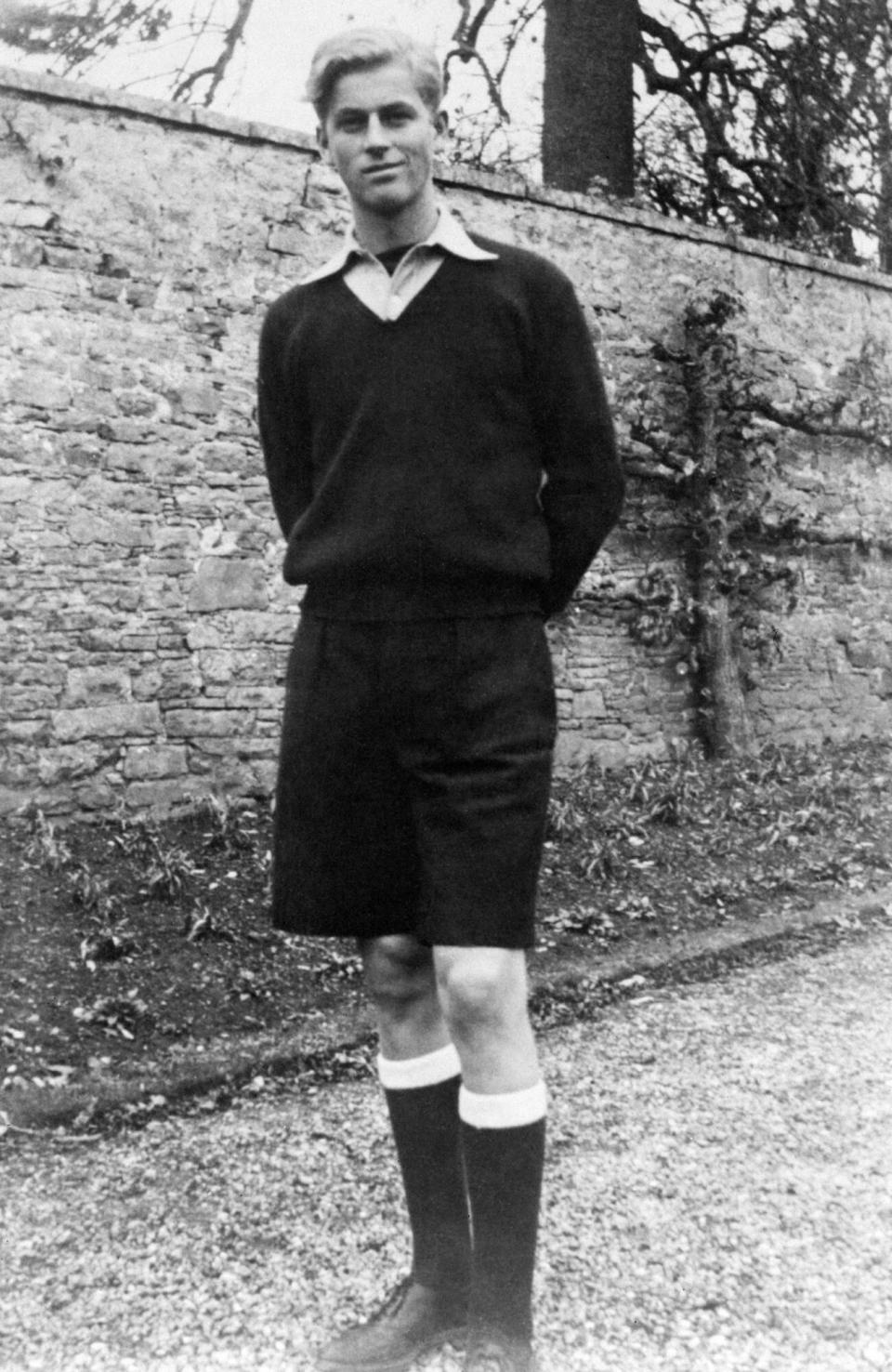Inside Prince Philip's Tortured Childhood

Prince Philip, who died at the age of 99 on Friday, started life in the most un-glamorously royal manner imaginable.
Born sixth in line to the Greek throne on June 10, 1921, Philip — then known as Prince Philippos of Greece and Denmark — was forced to flee his homeland at the age of 18 months following a military uprising against his uncle, King Constantine I.
Listen below to the episode of our daily podcast PEOPLE Every Day where we are looking back at Prince Philip's life and legacy.
His journey involved none of the luxuries he would later enjoy as Duke of Edinburgh: to escape the anti-monarchists hunting his father, Prince Andrew of Greece, the infant prince was placed inside an orange crate and smuggled off the beautiful island of Corfu onboard the British warship HMS Calypso.

PA Images via Getty Prince Philip at Gordonstoun school in Scotland
"[The question was] whether it will get there in time, or will our throats be cut?" Philip's cousin, Lady Pamela Hicks, revealed in an April 2020 podcast about the family's thinking at the time of the escape, which also involved Philip's parents and his older sisters Margarita, Theodora, Cecilie and Sophie.
The exiled royals eventually settled in Paris, where the young prince enrolled at an innovative American school on the outskirts of the city known as 'The Elms." But the bright lights of Paris didn't provide the haven the children had hoped for.

Keystone-France/Gamma-Keystone via Getty Prince Philip with his mother, Princess Alice of Battenberg, in 1960
In 1928, Philip's mother, Princess Alice of Battenberg, became deeply religious and converted to the Greek Orthodox Church. She later started to claim that she was receiving divine personal messages from both Jesus and Buddha and been given healing powers.
Late one afternoon in 1930, Philip and his siblings returned from an outing to be given the news that their mother had been committed to a sanitorium in Switzerland after suffering a nervous breakdown.
Alice, who was born deaf at Windsor Castle in 1885 in the presence of Queen Victoria, was later diagnosed with paranoid schizophrenia and treated by psychologist Sigmund Freud.
"She found Christ," Pamela Hicks says in the podcast. "The religious mania was part of the breakdown."
Adds her daughter India Hicks, "It was (either) a full-blown breakdown or people couldn't understand and supposed that she was actually mad because she had found religion in such a strong way."
With his mother locked away in a sanitorium — described as "a charming house of a family" by Pamela Hicks — and his father mostly absent in the South of France, Philip was effectively raised by his older sisters.

Fox Photos/Getty Prince Philip in a school production of Macbeth
This would prove to have a dramatic influence on his life when in 1933, at the age of 12, he attended the Schule Schloss Salem boarding school in Baden-Württemberg, Germany.
By that time, the Nazis were in control of German society and Philip's contemporaries have spoken of how Hitler Youth uniforms and military drills were present at the school.
"He was, of course, too young to have much opinion about Nazi politics, but he was evidently amused by their ridiculous strutting, and we are told he laughed whenever he saw the Nazi goosestep," writes Philip Eade in Young Prince Philip.

ullstein bild/ullstein bild via Getty Images Prince Philip (front row, center) with the Gordonstoun school cricket team
After a year in Germany, Philip was put into the care of his uncle, George Mountbatten, second Marquess of Milford Haven, and enrolled at the Gordonstoun boarding school in Scotland (later attended by Prince Charles).
It proved to be a turning point. Philip excelled in cricket and hockey and at the age of 14 came into contact with a then 8-year-old Princess Elizabeth. After graduation he joined the Royal Naval College in Dartmouth, leaving in 1940 as the best cadet on his course.
Princess Alice, meanwhile, remained in the Swiss sanitorium until the mid-1930s and did not make contact with her family until 1937 – only coming face-to-face with her husband Prince Andrew in 1938 following the death of Philip's sister, Cecilie, in a plane crash.

Keystone-FranceGamma-Rapho via Getty Prince Philip in a British Army uniform
Alice returned to Athens afterward to work with the poor and continued this community service throughout World War Two, where she bravely hid a Jewish widow and her two children from Gestapo searching her small two-room apartment.
"I suspect that it never occurred to her that her action was in any way special," Philip said of his mother at a 1994 visit to Yad Veshem, the Holocaust Memorial in Jerusalem.
"She was a person with deep religious faith, and she would have considered it to be a perfectly natural human reaction to fellow beings in distress."

PA Images via Getty Prince Philip as a young naval officer
Can't get enough of PEOPLE's Royals coverage? Sign up for our free Royals newsletter to get the latest updates on Kate Middleton, Meghan Markle and more!
In 1949, Alice founded a nursing order of Greek Orthodox nuns in Athens and remained in the Greek capital until 1967 when she relocated to Buckingham Palace over safety concerns – a moment captured in Season 4 of The Crown. She died at Buckingham Palace in 1969, leaving behind few possessions.
"She wanted to do something in life," adds Pamela Hicks about the chain-smoking, card-playing royal nun. "She was a great character, Aunt Alice."

